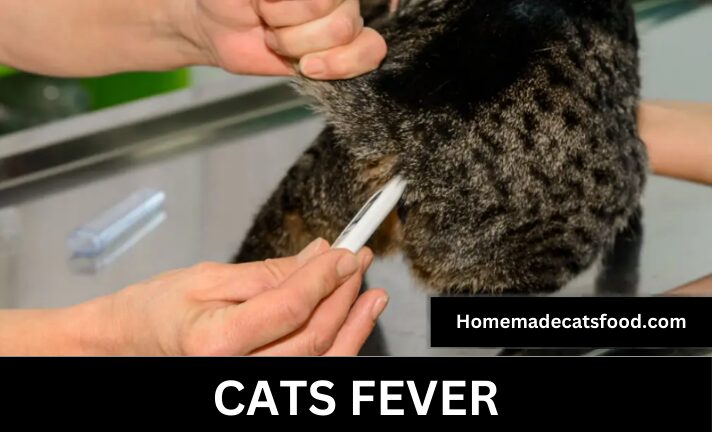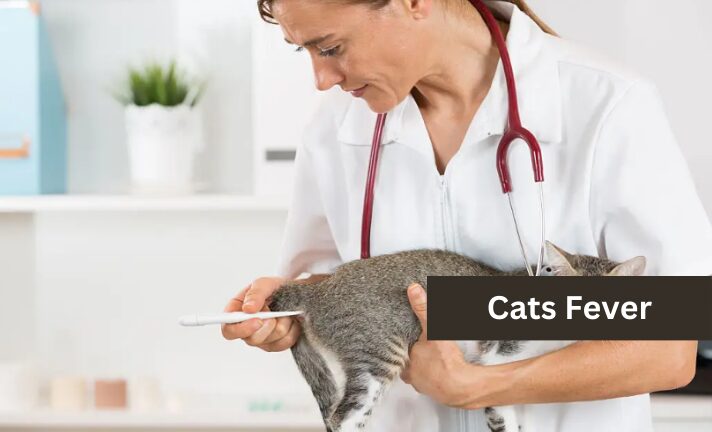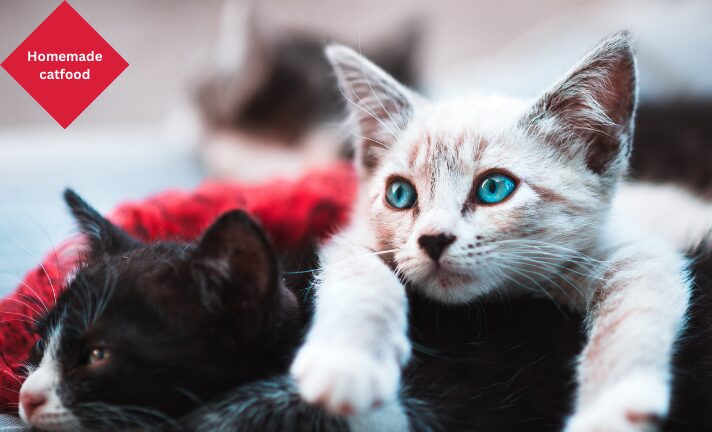Cat Fever
Being informed of common health conditions is vital if you own a cat. That might have an impact on your pet. Cat fever, sometimes referred to as feline hyperthermia, is one such problem. Even though this illness may seem frightening. In actuality, it is common and curable. We’ll talk about cat fever’s definition of symptoms causes. And available treatments in this post.
Cat Fever: What Is It?
A high body temperature in cats is referred to as feline fever or feline hyperthermia. A cat’s typical body temperature. It is between 38°C and 39.2°C or 100.5°F and 102.5°F. Anything beyond this threshold could be a fever.

Cat Fever Causes
Several factors can cause cat fever. Including infections and environmental heat. And underlying health conditions. Some common causes include:
- Infections: Cats can develop a fever as a response to bacterial or viral infections. Such as upper respiratory infections urinary tract infections, or feline panleukopenia.
- Environmental Heat:
- Due to their sensitivity to extreme heat cats may overheat and develop a fever.
- vaccines: Following vaccines some cats may experience a low-grade fever. This is a typical reaction as their immune system develops.
- Medications: Certain medications or treatments can cause an increase in body temperature. As a side effect. If you observe this behavior in your cat. You must speak with your veterinarian about doing it.
- Cats that have been exercising or who are very active may also get fever. when they get more active and their body temperature rises. Also to these considerations, there are some underlying medical conditions. Cat fever may result from that. These include cancer, hyperthyroidism, and kidney illness. if you think your feline may be feverish.
- seeing a veterinarian first as many drugs might be poisonous to cats. How to Prevent Feline OvernightAlthough preventing cat fever might not always be workable. There are actions you can take the risk.
- Among them are:
- Keeping your cat’s immunizations current and providing a cool and comfortable living environment
- Keeping an eye on your cat’s activity level, particularly in the summer
- Avoiding overexertion in cats that are prone to heat sensitivity
- Monitoring your cat’s health and seeking veterinary care if you notice any changes
Understanding Baby Cat Fever
A young cat that has a temperature that is higher than usual said to have baby cat fever, also called kitten fever. Like human babies kittens can get fevers when they are not feeling well.
Why do Baby Cats get Fever?
Baby cats can get a fever for many reasons. They caught a cold. Or they have an infection. Sometimes a fever can happen after they get a shot from the vet. But we don’t worry too much. A vet will know how to help them feel better.
How Can You Determine If a Kitten Is Feverish?
Feline infants may act out. They could be less inclined to play. Or they might object to eating. They may get more sleep. Or their breathing may quicken. if their dry warm nose is present. It might also say that they’re feverish.
How should a baby cat with a fever treated?
if a feline kitten is feverish. They ought to visit the veterinarian. To make them feel better, the veterinarian may prescribe medication. But remember that we should never give them human medicine because it could harm them.
How Is Feline Infant Fever Prevented?
To prevent kittens from becoming feverish. We should make sure the vet administers all their vaccines. We should also make sure they live in a nice cool place especially. When it’s very hot outside. We should always keep an eye on how they’re feeling so we can help them if they start to feel sick.
In Conclusion
Cat fever is a common issue that can affect cats of all ages. It’s important to check your cat’s body temperature. And seek veterinary care if you suspect they have a fever. With proper treatment and prevention measures. You help keep your cat happy and healthy. And for baby cats, it’s important to pay extra attention to cat health.
And seek prompt veterinary care if they show signs of a fever. It is our responsibility as conscientious pet owners. To always look out for our beloved friends. So let’s stay informed and take the necessary steps to keep them healthy and comfortable.
Let’s also remember that taking preventative measures can reduce the risk of cat fever. Therefore always be sure to speak with your veterinarian and take the appropriate safety measures.
1. What is cat fever exactly, and how can I tell if my cat has it?
A cat’s increased body temperature referred to as cat fever. Or feline hyperthermia. Lethargy decreased appetite increased panting. And a need for cool places are some possible symptoms.
2. When should I get concerned about cat fever, and what are the typical causes?
Cat fever can brought on by many things, such as heatstroke poisoning. And general medical issues. if the temperature of your cat is higher than 39.4°C . or contact your veterinarian if they exhibit any signs of concern.
3. What is a normal temperature for my cat and how can I take one at home?
To take your cat’s temperature, use a digital rectal thermometer. Cats have body temperatures between 100.5°F and 102.5°F.
4. Do some cat breeds have a higher risk of fever than others?
While fever can strike any type of cat some kinds are more susceptible than others. Some varieties like Himalayan. And Farsi may be more susceptible to respiratory illnesses that cause fever.
5. What actions can I take at home to assist lower my cat’s fever?
Give your cat a cool peaceful space; provide them with lots of fresh water to quench their thirst. And use cool pads or cloths to reduce their body temperature. But before giving any medication please check with your veterinarian.


thanks a lot